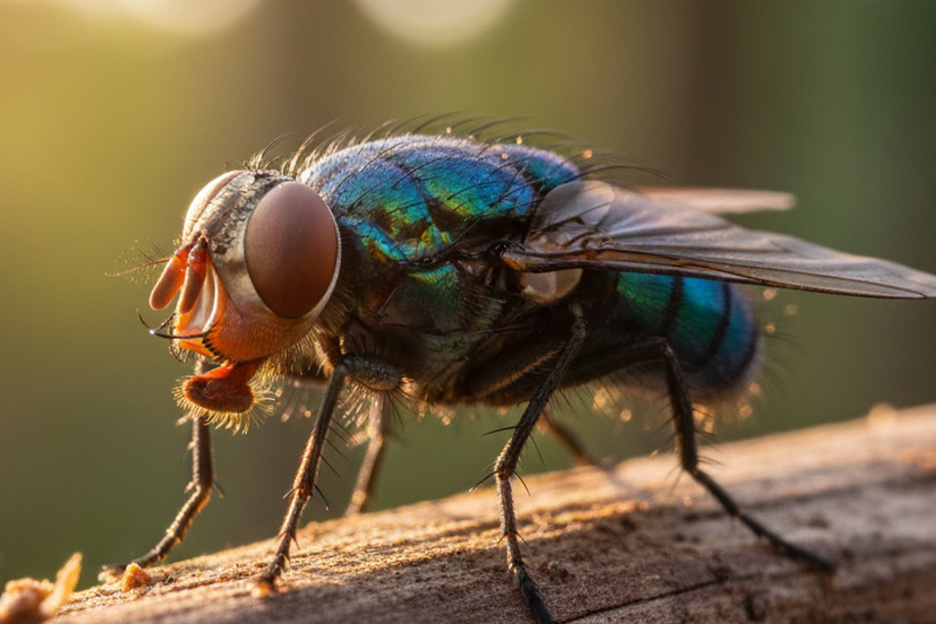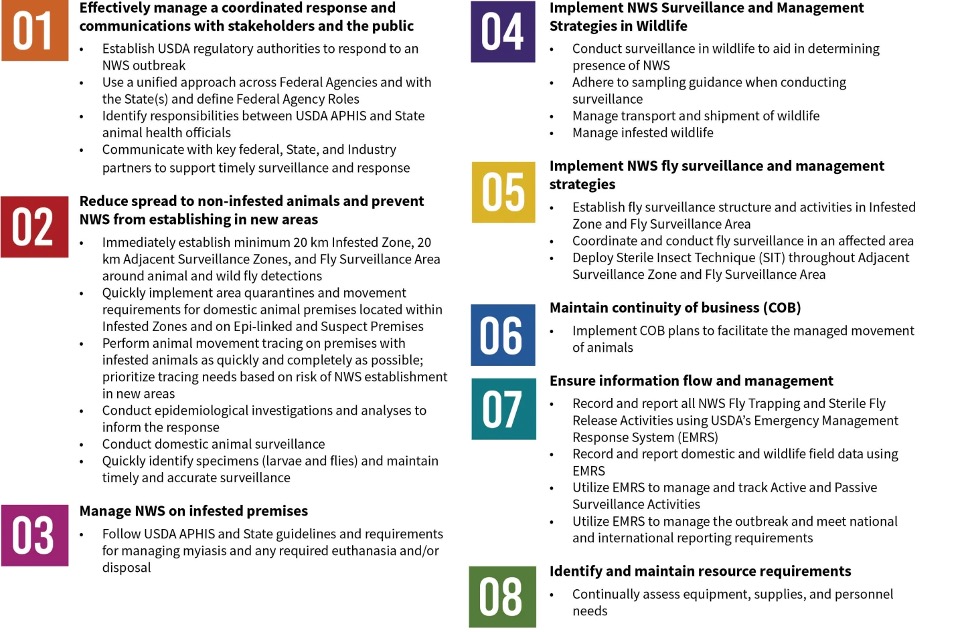
In August of this year, we reported on the state of the beef industry amid a historic cattle supply shortage. The low cattle supply is currently one of the biggest issues facing the beef industry; however, the outbreak of the New World Screwworm (NWS) across Central America has prompted the USDA to implement a response plan aimed at stopping the spread.
The NWS isa parasitic fly known for laying its eggs in open wounds of warm-blooded animals. The recent outbreak, which began in 2023, has meant the southern border has been closed to Mexican cattle imports since May, 2025. Cases have been spreading north, and as of September 2025, NWS was reported only 70 miles from Texas. This pest is a serious concern and, when left untreated, has been responsible for killing large populations of livestock, wildlife, and pets, and can also be passed to humans.
THE THREAT OF NWS
This pest is not new to the United States. In the 1950s, NWS devastated livestock populations and cost farmers millions of dollars before it was eradicated in 1966. The pest re-emerged in the Florida Keys in 2016, but control measures were swiftly implemented, and NWS was eradicated a second time by early 2017.
The potential re-establishment of NWS could have crippling effects on the already vulnerable cattle industry. The beef cattle supply in the US is the lowest it’s been in 61 years. Farmers battling rising prices of essential goods, like feed, and unpredictable weather conditions, are concerned about NWS adding more stress.
The USDA estimates that the eradication of NWS in the U.S. yields an annual economic benefit of approximately $2.8 billion to the wider economy. Historically, protecting against NWS has been critical for safeguarding the livelihoods of farmers and ranchers and ensuring the stability of beef prices.
RESPONSE & READINESS
Confident in the nation’s ability to defeat the disease once again, the USDA announced a five-point plan in June 2025 to tackle the spread of NWS. A key part of this strategy is the creation of a new facility at Moore Air Force Base in Texas, set to open in early 2026, which will breed 300 million sterile male flies per week.
In the past, the U.S. Department of Agriculture’s (USDA) Animal and Plant Health Inspection Service (APHIS) has partnered with other USDA agencies, the U.S. Department of State, and the Food and Agriculture Organization of the United Nations to control and eradicate NWS in Central America and Mexico and the United States using sterilization as a primary method. Sterile Insect Technique (SIT) is a proven method to fight NWS and was used across North America during the second half of the 20th century. Using gamma radiation, SIT treats male flies that are released into the wild. The treated flies mate with females, who lay unfertilized eggs. A primary reason that SIT is so effective is that female NWS only mate once. After mating with sterile flies, the NWS population shrinks until eventual eradication. The USDA says that Sterile Insect Technique is “safe, environmentally friendly, and offers a sustainable, non-toxic alternative to chemical pesticides. (SIT) poses no risk to wildlife, livestock, or people in infested areas.”
On October 20th, the USDA released the New World Screwworm Playbook. The playbook details eight critical activities for federal, state, and local responders on approaches, resources, and tools to enact in the event of a U.S. detection of NWS.

A promising development is the FDA’s conditional approval of the antiparasitic drug, Dectomax-CA1 (doramectin injection). This is the first drug approved by the FDA for New World Screwworm. Due to the time sensitivity, cattle producers can obtain it now, as the FDA seeks full approval of the drug. Dectomax-CA1 is an injectable solution for the prevention and treatment of New World screwworm larval infestations, and prevents NWS reinfestation for 21 days. A medication like Dectomax can enhance protection and could make a huge difference if NWS were to return.
Regardless of whether NWS makes a return to the United States, farmers will continue to show the resilience they have for generations. At Rinse and Chill®, we recognize that our technology can help farmers stretch their herds further and add more predictability to their sales during this period of uncertainty.
